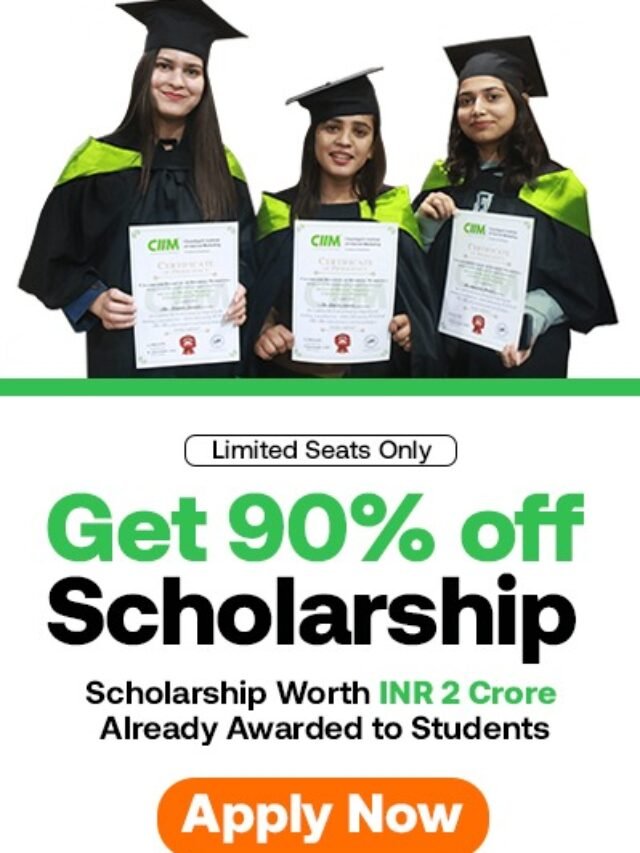Higher Education Marketing Strategy – How to Master Your Admissions Funnel
 Higher Education Marketing Strategy – We all know that the most important thing for any educational institution is the number of enrolled students. This dictates all of your budgeting considerations and the very survival of your institution.
Higher Education Marketing Strategy – We all know that the most important thing for any educational institution is the number of enrolled students. This dictates all of your budgeting considerations and the very survival of your institution.
In order to get the maximum number of students enrolled, you need to take great care to market your institution effectively. And the first step to better marketing is understanding your buyers’ journey, i.e. your potential students’ journey.
In this post, I’ll present a smart way to structure your admissions funnel, and I’ll go over all the different channels you must consider at each stage. You’ll learn how to better understand, prioritize, and integrate all of your marketing and recruitment efforts.
In subsequent posts I will focus on more specific examples and methods to boost your efficiency, so stay tuned!
Table of Contents
Why Is Understanding the Admissions Funnel So Important?
Let’s face the truth — selecting a college or university is one of the most important decisions in the minds of your future students and their parents. Winning their hearts and minds is key to convincing them your institution is the best fit.
Regardless of your reputation, the whole family is going to research your institution online and they’re likely going to find both good and bad things about you. While you can’t control everything they’ll see, you can and must strategically plan the content you provide them yourself.
At each step of the decision-making journey, your future students have different question and worries, (i.e., “pain points” in marketing speak). While high school junior needs to be persuaded that college (in general) is a worthwhile time investment, a senior who’s been accepted and is choosing between 3 schools needs to see why your school in particular is their best fit.
To win all of these potential students over, you must speak their language and give them the right content at the right time. Each student’s journey can be mapped into a buyer sales funnel, which will help you better plan your marketing efforts.
The Higher Education Admissions Funnel
Just like any sales funnel, the admissions funnel is a useful way to map your target student’s journey. But here’s what makes it an unusual beast to tackle:
- The funnel journey is deep. It often has seven or more steps.
- The funnel journey is slow. Because of the big number of steps, the variety and sheer volume of documents, and the difficulty of the “where to apply” decision, it may take several months, or sometimes more than a year, before your prospects finally enroll.
We’ve all seen it — we work hard on engaging our prospects and on receiving confirmation emails and deposits, only to see it all end with a “thank you” email and no enrollment.
Enrollment is very hard work and few people realize it before they ask you about “the numbers, the numbers!” But if you start using the admissions funnel to your advantage to optimize your existing marketing efforts, you may find that with the same amount of work you can achieve better results.
Engagement and Channels to Consider
Now that we’ve outlined the basic structure of the funnel, let us look into the students’ content expectations.
We’ve mentioned the Content Marketing Matrix For Higher Education before to help you better structure your content plans. Remember, you must base your marketing and recruitment strategy around the expectations of your target audience, not yours! That includes basing your selection of marketing channels on your audience’s habits.
You and your team need to research your potential students to the point where you know them better than they know themselves. By addressing their needs and wants at each step of of their college exploration journey, you’ll gain their trust and possibly their enrollment.
Group #1 Prospective Students
Anybody whose name and email you somehow acquired is part of this group. Often, enrollment directors purchase large number of names from databases or test centers. Having a large number of prospective students is not a sure promise of future success, though.
Traditionally, prospective students are not engaged with your brand or institution. You may have their data, but they may not know about your existence.
Pain point: They want to be successful in life.
Solution: You should be more general with you messaging, meaning that since prospects are not engaged yet, you should be enticing them with the surface-level unique benefits of studying at your institution. Don’t go into details about student life and campus activities just yet.
Distribution Channels:
- Search Engine Optimization (SEO) of your site so prospects can find you more easily. This can make or break your efforts to attract new students.
- Pay-per-click (PPC) on major search engines like Google
- Conversion Rate Optimization (CRO) of your site so you can turn unknown visitors into known prospects
- Email Marketing with engaging content
- Print Materials
- High School Visits
- Educational Fairs
- Social Media
- Affiliate Marketing
- List buys
Best Practices: Use visual presentations, videos, photos, engaging email copy, brochures, toss pieces, banners, etc.
Note: Contrary to popular belief, producing engaging video content is not difficult and expensive. You can skyrocket your traffic and engagement very effectively even if you’re doing it in-house.
Group #2 Inquiries
This is a very tiny part of your prospective students who have somehow expressed interest in your institution. Maybe they signed up for an information package, or called admissions, or came to one of your recruitment events. This small group of people represents the biggest opportunity for your institution.
Pain Point: They’re looking at a few institutions, and they need help figuring out which one’s their best fit.
Solution: You can now target your messaging toward the unique experience you provide. This group is more likely to be interested in student life, campus events, facilities, social life, food, sports, etc. Try to show your inquiries as powerfully as possible what it is like to be part of your community.
Channels you can use:
- Content Marketing
- Events
- Print Materials
- Email Marketing
- Social Media
- PPC
- Personal Calls
Best Practices: Use PPC remarketingcampaigns, postcards to the family, engaging blog posts, viewbooks with beautiful photos, phone calls, events for inquiries and parents (Open Houses), online events (webinars), email newsletters, and more.
A good example of a print material use comes from the University of Maine View Book. The institution is very effective in “selling” Maine’s beautiful landscapes, compensating for the traditional low popularity of the state. Furthermore, you can be certain that the bear cub photo was not selected at random but was tested upon!
Group #3 Applicants
It’s very exciting when all goes well and you engage your inquiries to the point that they start their application. Maybe they submitted an application form, an essay, or a test result. Applicants are the future students which need daily nurturing from your admissions counselors.
Pain Point: You’ve made it into this students list of top school choices, but they’re afraid they won’t make it in.
Solution: Since this group has started their application, it’s safe to assume that they are very engaged. Your communication with them should become very personal, assuring, and helpful. Guide them through each application step they need to take.
Channels you can use:
- Personal Calls
- Events
- Webinars
Best Practices: Use student life videos, faculty and current students calls/emails, personalized emails from admissions counselors, phone calls, admissions events and “how to apply” webinars.
As I counselor at the American University in Bulgaria, I had to call applicants so many times at their house that I often got to be friends with their grandparents who were usually the first to pick up the phone. Establishing this kind of personal contact with our applicants did wonders to make them feel supported and at home with our institution.
Group #4 Admits, Confirms, and Enrolled Students
This group includes a few funnel stages together, since they require similar marketing engagement. They include:
Admits: You have received all their application documents. The applicants meet your minimum admissions criteria and you are sending the long-awaited admission letter. Phones are ringing and moms are crying from happiness.
Confirms: The admits who accept your financial and admission offer. These are the admits who state that they are planning to attend your institution.
Enrolled Students: You’ve received the small enrollment deposit. Your confirmed students have made a financial commitment to studying at your institution on the conditions which you outlined at the admissions letter.
Pain Points: These students may have been accepted into many institutions and confirmed attendance at a few of them simultaneously. They’re waiting for financial offers to compare and choose their best fit. They might even have put down deposits at a few institutions because they haven’t yet made up their minds.
Solution: Starting with the admits, these groups are well on their way to becoming members of your community, so you should welcome them into your family. Your communication should be as personal as possible. Call often to check in and make sure you address all of their worries, including financial ones.
Channels you can use:
- Personal Calls
- Events
- Social Media
Best Practices: Branded knick knacks, calls from alumni, presidential emails, social media groups with other admitted students.
Babson College does a great job with knick knacks. As an alumnus, I still use their mug on a daily basis.
Group #5: Retained
This is that “number” which everybody’s always asking you about. Unfortunately not all enrolled students will become actual students. Some will receive better offers from your competitors at the last moment; some will simply change their mind.
The difference between enrolled and retained students is often referred to asthe “Melt”, and is something that gives Admissions Office staff nightmares on a daily basis. To boost your retained students you must be as efficient as possible in your efforts to genuinely engage with Group #4 — Admits, Confirms, and Enrolled Students.
Conclusion
So, how can you boost the numbers? This is the most important question for enrollment professionals. The answer is very simple. You can do two things to increase your enrollments and keep everybody at your institution happy:
- Widen the funnel at the top to engage more prospects
- Be more efficient in your marketing all the way through the admissions funnel




